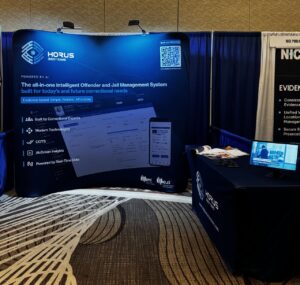A new technical guide has been released to support European correctional authorities in selecting and implementing Commercial Off-The-Shelf Offender Management Systems solutions. Authored by correctional technology experts, the 90+ page publication includes a practical vendor assessment tool and covers procurement best practices, technical requirements, and strategic guidance.
As correctional services across Europe face growing pressure to modernise and improve operational efficiency, the adoption of Offender Management Systems (OMS) has become a strategic priority. These systems – designed to manage all aspects of an offender’s journey through the criminal justice system – are critical for improving data-driven decision-making, institutional safety, and rehabilitation outcomes.
Increasingly, jurisdictions are turning to Commercial Off-The-Shelf (COTS) OMS solutions: pre-built, configurable software platforms that support efficient deployment, cost-effective operation, and scalable functionality across correctional systems.
With the goal of supporting this shift, a new guide – “Procuring a COTS Offender Management System in the European Union: A Guide for Prison Services” – has just been published.
The 90+ page resource offers a comprehensive framework for jurisdictions exploring or preparing to adopt a COTS OMS, combining academic rigor with deep real-world expertise. It is authored by Prof. Dr. Nuno Garcia, Full Professor at the University of Lisbon; Pedro das Neves, Executive Director of IPS_Innovative Prison Systems and Editor of JUSTICE TRENDS Magazine; and Simon Bonk, Former CIO of the Correctional Service of Canada and current Head of R&D at Telio Group.

A comprehensive and practical resource
The guide outlines strategic and technical considerations for correctional agencies to effectively procure and implement COTS OMS solutions. It also introduces a practical “OMS Solution & Vendor Assessment Tool”, designed to help prison services evaluate product maturity, assess configurability, and align vendor offerings with operational and compliance requirements.
In addition to this, the guide offers a thorough exploration of the advantages, challenges, and best practices that agencies should consider when integrating these systems into their correctional infrastructure.
Topics covered:
- The advantages of COTS OMS over custom development.
- What defines a “true” COTS OMS – and how to spot misleading claims.
- The risks of over-customisation, vendor lock-in, and market distortion.
- Essential functional and technical requirements and systems architecture.
- Change management strategies and building effective public-private partnerships.
- Licensing, intellectual property, and geopolitical risk considerations.
This resource is essential reading for professionals involved in correctional modernisation and procurement. It offers valuable insights for correctional administrators and strategic planners seeking to align digital transformation with policy goals; CIOs and IT professionals looking to ensure reliable technology and smooth integration; and public procurement teams tasked with selecting and contracting OMS solutions in a complex and evolving marketplace.
By addressing both high-level strategy and on-the-ground implementation, the guide is an indispensable resource for any European jurisdiction seeking to build smarter, more responsive, and future-ready correctional systems.
Related news








